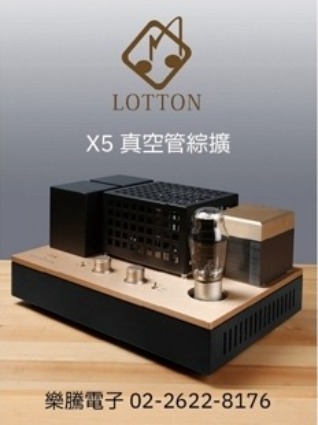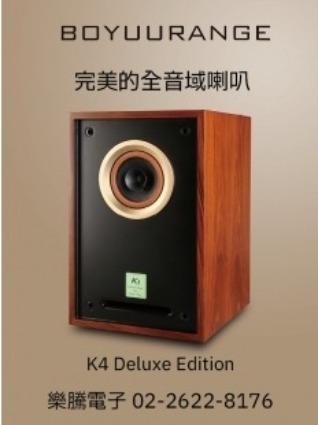Listening Notes: X5 + K4 Paired with PC100USB
If music is an art of time, then a tube amplifier is a medium that slows down time, allowing listeners to feel the emotions within each note more delicately.
In recent days, I finally gathered Lotton Electronics’ X5 tube amplifier, K4 full-range driver speakers,
and a seemingly unassuming yet very affordable Fostex PC100USB as the DAC.
Connected to the Qobuz streaming platform, I listened to several classics: Tsai Chin’s "Ferry," Eagles’ "Hotel California," and Arve Tellefsen’s performance of "Remembrances from Schindler’s List."
At first power-on, the tubes in the X5 had not fully warmed up, and the sound was slightly restrained.
After a few minutes, as the tubes warmed and the tone became richer, the entire soundstage opened like a soft mist, revealing airiness, reverberation, and density.
Though the wooden enclosure and drivers of the K4 are compact, paired with the tube preamp, it conveys a composed elegance born of understanding its limitations.
This is not about sheer volume or power, but a warmth like flowing water, delicate and finely woven.
The first track I listened to was Tsai Chin’s "Ferry," a song full of deep emotion.
The softly bouncing drums surprised me. Paired with Tsai Chin’s magnetic mezzo-soprano voice, the X5 + K4 combination, together with the Fostex PC100USB,
although not as precise or finely detailed as higher-end DACs, delivers a tone that is “clean, gentle, warm, and not harsh.”
The drum sounds are steady and powerful without booming or muddiness, the sound clean yet carries the warm color of wooden resonance.
When Tsai Chin starts to sing, her voice is no longer “coming out of the speaker,” but like an old friend gently telling you stories in a room after dusk.
The X5 amplifies her breath and vocal nuances warmly, with an airy tail that lightly drifts out of the K4 drivers, as if time itself slows down.
Next was the acoustic version of "Hotel California."
This song’s opening guitar is my must-choose track for testing audio systems.
Can the left and right stereo channels be accurately positioned? Does the spatial sense clearly show front-to-back distances? Are the rhythmic drum beats and acoustic guitar harmonies distinct?
With this system, I clearly felt the “stage unfolding right in front of me,”
especially when the two guitars alternate at the beginning, the notes roll from the sides into the ears, then gradually blend in the center.
Although the K4 drivers can’t match multi-driver systems in sheer energy, they excel in clean sound and rich midrange detail without stealing the spotlight or sounding artificial.
When the lead singer starts singing, the hoarse, slightly aged vocal tone feels like a traveler sitting at the edge of a desert motel, telling stories he cannot leave behind.
The tube amplifier’s coloration adds a layer of melancholy and poetry to this song, rather than the coldness and precision often found in digital systems.
Finally, I chose Arve Tellefsen’s violin piece "Remembrances from Schindler’s List" from the album ARCO.
The notes are extremely delicate, emotions fragile as porcelain.
With this system, the violin’s sound is not shrill or piercing but mournful, like human speech.
The X5 clearly reveals the friction details between bow and string, the subtle breathing of pianissimo notes, without overemphasizing.
The K4 presents not a violent bowing but the moment when tears almost fall, emotions on the verge of collapse.
Each slide and note tail extends in the air, lingering and unyielding.
Overall, this system is not designed to showcase extreme frequency extension (such as ultra-low or ultra-high frequencies),
but rather to handle “musical emotion” in a deeply moving way.
The tube coloration and airy sound of the X5 complement the PC100USB’s lacking warmth,
while the K4 gently and generously wraps these beautiful sounds with a warm midrange.
This is more than just a combination of equipment—it is a “sincere conversation,”
a way to quiet down and rediscover those familiar melodies that have never before moved you so deeply.

